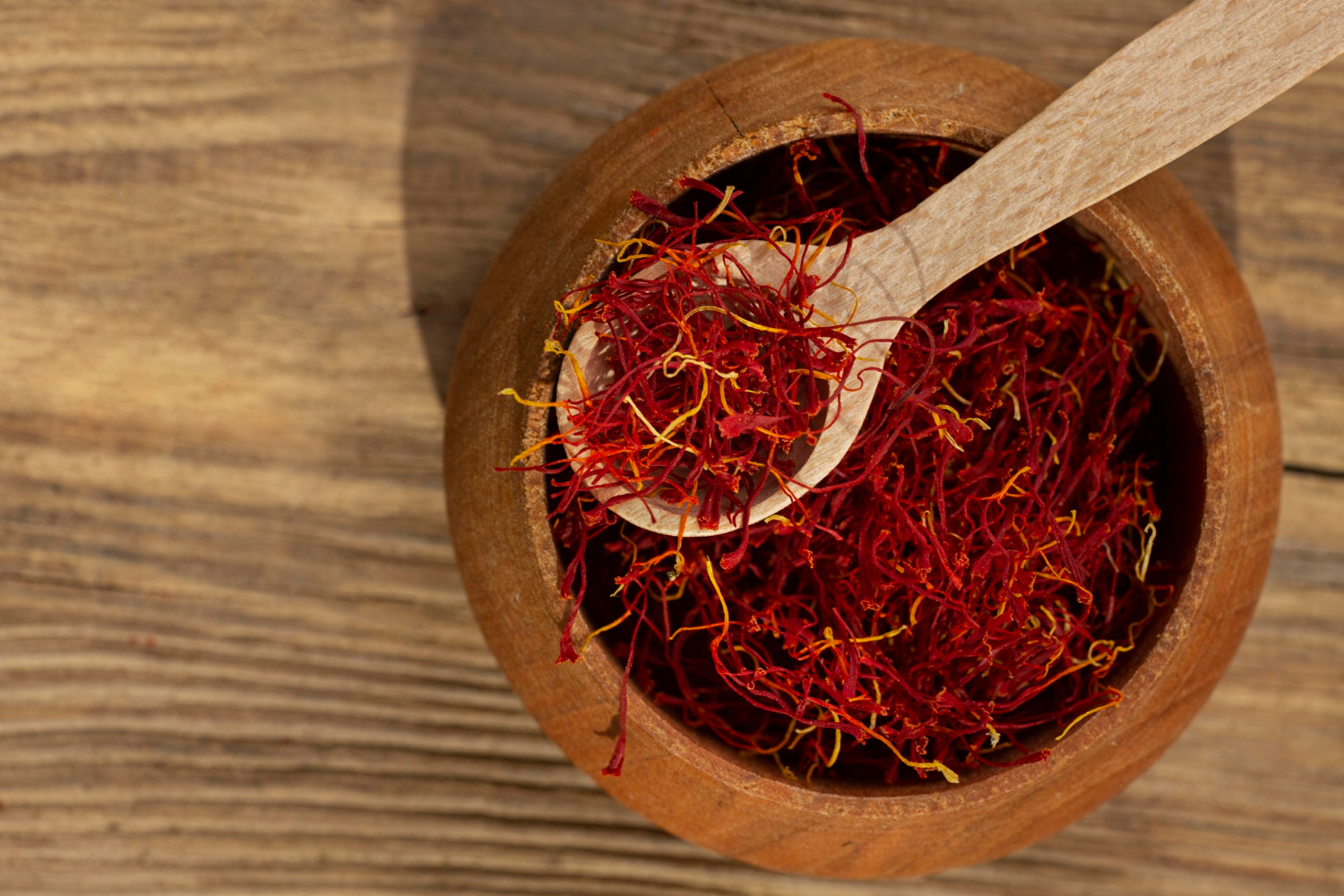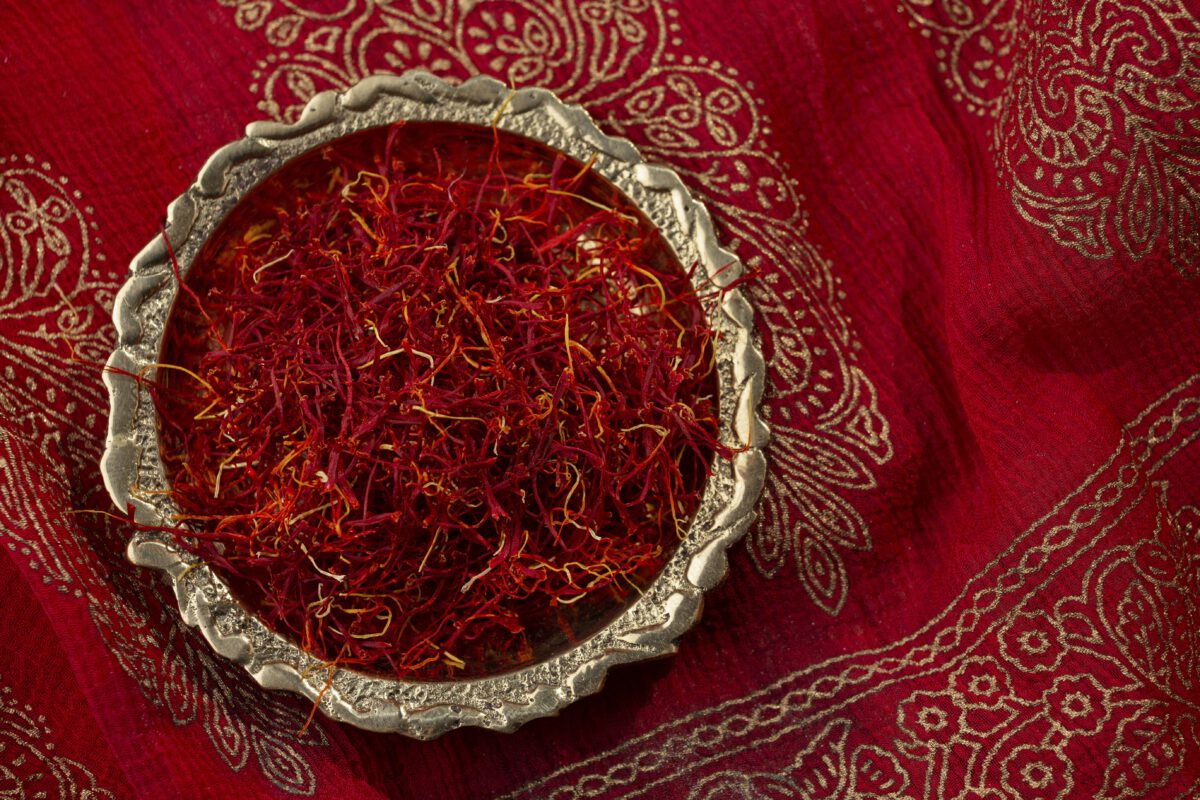Saffron: Pharmacological Properties, Therapeutic Potential, and Practical Applications

Overview of Saffron
Saffron is a phytochemical-rich spice derived from the dried stigmas of the Crocus sativus flower. Renowned for its distinctive aroma, vivid carotenoid pigmentation, and subtle flavor, saffron has been historically incorporated into culinary, medicinal, and ceremonial practices across diverse cultures. Its elevated market value stems from its labor-intensive harvest—each flower yields only three stigmas, requiring upwards of 150,000 blossoms for a single kilogram of product.
For foundational context, refer to Wikipedia – Saffron.
Antioxidant Capacity and Cellular Protection
Bioactive constituents such as crocin, crocetin, safranal, and picrocrocin exhibit strong antioxidant activity. These compounds mitigate oxidative stress by neutralizing free radicals, thereby reducing cellular damage and contributing to the prevention of chronic illnesses such as cardiovascular disease, metabolic syndrome, and certain cancers. Healthline: Saffron Antioxidants
Neuropsychological Impact: Antidepressant Effects
Meta-analyses of randomized controlled trials (RCTs) suggest that saffron supplementation (typically 30 mg/day) may yield notable antidepressant effects in individuals with mild to moderate depression. Its efficacy is comparable to some selective serotonin reuptake inhibitors (SSRIs). Proposed mechanisms include modulation of serotonin, dopamine, and norepinephrine pathways. Cleveland Clinic: Saffron and Mood
Neuroprotective and Cognitive-Enhancing Properties
Emerging data support saffron’s neuroprotective potential, particularly in the context of Alzheimer’s disease and age-related cognitive decline. Crocin, in particular, has demonstrated promise in improving spatial learning and memory in animal studies, possibly through anti-inflammatory mechanisms and enhanced synaptic plasticity.
Alleviation of Premenstrual Syndrome (PMS)
Clinical trials indicate that saffron can help alleviate both emotional and physical symptoms of PMS, including irritability, mood swings, and cramping. These effects are likely due to saffron's interaction with neurotransmitter systems and prostaglandin regulation.
Potential Role in Sexual Health
Traditionally regarded as an aphrodisiac, saffron has demonstrated some efficacy in enhancing libido and sexual performance. These effects are particularly evident in individuals experiencing sexual dysfunction related to antidepressant use. However, further clinical validation is necessary.
Toxicological Threshold
Saffron is generally recognized as safe (GRAS) when consumed in standard culinary amounts. Toxicity has been reported at intakes exceeding 5 grams per day, resulting in symptoms such as nausea, dizziness, vomiting, and uterine bleeding.
Allergenicity
Although uncommon, saffron can provoke allergic reactions in sensitive individuals, manifesting as skin irritation or respiratory symptoms.
Pregnancy Considerations
High doses of saffron may stimulate uterine contractions, posing risks during pregnancy. It is therefore contraindicated during pregnancy without medical supervision. Caution is also advised during lactation.
Pharmacodynamic Interactions
Saffron may interact with medications such as antihypertensives, anticoagulants, and psychotropics. These interactions can be additive or synergistic. A comprehensive medication review is recommended prior to use.
See WebMD – Saffron Safety for more details.
Methods of Administration
Culinary Use: Common in Mediterranean, Middle Eastern, and South Asian cuisines, saffron is typically infused in warm water or milk to maximize its flavor and pigmentation before use in dishes.
Beverages: Saffron can be infused into herbal teas or warm dairy-based beverages, offering a calming effect with potential cognitive benefits.
Dietary Supplements: Available in standardized extract or capsule form, saffron supplements such as affron® or Safr'Inside™ are used in clinical settings. Users should follow dosage recommendations and consult healthcare professionals if concurrently using prescription medications.
Conclusion
Saffron possesses multifaceted therapeutic properties with emerging evidence supporting its use in neurological, psychological, and gynecological applications. Its potent antioxidant and mood-regulating capabilities are particularly noteworthy. Continued research is essential to fully understand its mechanisms of action and long-term safety. With informed and moderate use, saffron may offer meaningful health benefits as part of a holistic wellness regimen.

